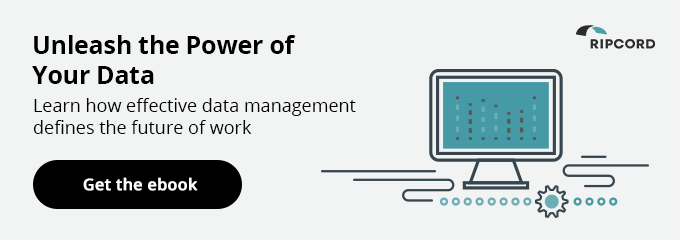
Choose Structured Cloud Storage Over a Digital Landfill
The emergence of connected, more aware technologies has created quite a conundrum for data-oriented businesses and operations. On the one hand, these technologies are capable of generating much more data and information that can be rolled back into the business to make improvements and optimizations. On the other hand, it also means business data stores grow exponentially over time to a point where they’re no longer manageable.
Addressing the Digital Landfill Problem
Imagine for a moment you have a pile of junk, most of which could prove useful if you took the time to sort through it and understand what it is. But instead of doing that, you just kept dumping more and more on top, compounding the existing pile and creating even more chaos.
Sounds an awful lot like a trash dump or landfill, doesn’t it? Well, it also describes what’s happening with most digital content. Content added to a repository without being properly profiled and classified will quickly pollute your archives to the point where they are no longer useful or manageable.
Leveraging the latest artificial intelligence (AI) and machine learning (ML) technologies to enrich content is a great answer to this.
Recognition & Cloud Storage
Cloud-based content management systems with auto-profiling offer an incredible opportunity to take back some of that wasted data and make it more profitable. Imagine there were automation tools to help you sift through the information and find pertinent uses and datasets.
The technology already exists in the form of auto-classification and records organization tools. They allow companies to either monetize or make effective use of such data repositories, and unlock their hidden potential. It fixes the digital landfill problem of redundant, obsolete, and trivial (ROT) content, and provides structure and metadata to content stored in your archive.
Ripcord’s Recognition software enriches content with classification and categorization so that by the time it reaches a repository it has associated information that makes the content more useful for users, workflows, and line of business integrations. The metadata also automatically drives the repository's security and retention and links it to other relevant and related content.
Benefits of Cloud Storage
In addition to unlocking previously unusable data, moving repositories to cloud-based content management introduces several other benefits.
- Disaster Recovery: The data is always backed up in the event of a local failure or system outage.
- Security: Cloud storage providers can deliver improved security and protection because they typically have access to more robust resources.
- Cost Savings: Maintenance, operation, and resource management – including storage replacement – are no longer a concern.
- Automation: Many tedious tasks and systems can be automated across the network, such as backup, analytics, or sharing.
- Usability & Accessibility: The content is accessible to anyone, including partners, at any given time, regardless of server loads or platform.
- Scalability: As a business grows, the organization must continue to scale up its data operations and storage to meet higher demands. Cloud storage systems can do this instantly, at no added costs or effort, because you only pay for the resources you use.
Furthermore, many of these benefits contribute to improving efficiencies for the organization and its partners, as well as provide higher rates of collaboration for affected teams.
Kickstart the Data Migration Process
Knowing all this, it doesn’t make sense for any organization or team to continue adding un-profiled content into a repository. Your content is one of your organization’s most important assets, but only if it is manageable and accessible. Auto-profiling with cloud-based document management is the best answer to maximize your content and drive your digital transformation initiatives.
/Ripcord%20Logo%20-%20Color%2011.png?width=2000&height=620&name=Ripcord%20Logo%20-%20Color%2011.png)




